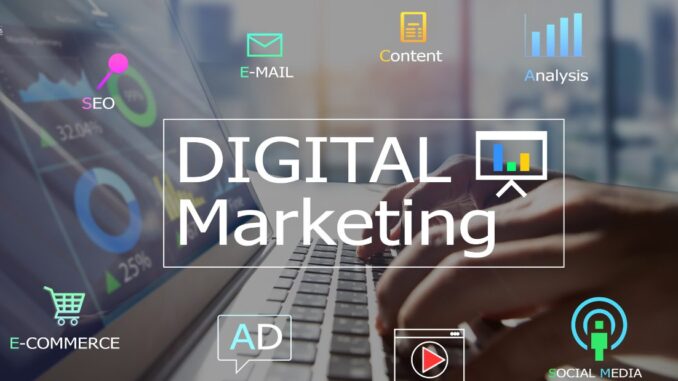
As we enter 2023, numerous brands are preparing for a global economic slowdown, with South African GDP projected to grow at a mere 1.1% and inflation showing little signs of easing. Let’s see the Future of Digital Marketing in South Africa.
Companies in South Africa will be meticulously analyzing their advertising and marketing expenditures in this challenging climate. However, digital marketing in South Africa is expected to experience robust growth as it offers accountability and measurability.
According to Warc, pure-play internet advertising is forecasted to grow by a relatively modest 5.5% globally in 2023, following a growth of 11.5% in 2022. Nonetheless, specific sectors and platforms are anticipated to outperform.
Online audio, for instance, is expected to witness growth of 25.6% this year, which will slow down to 10.1% in 2023. TikTok ad spending is another noteworthy trend, projected to increase by 143% in 2022 and 41.5% the following year.
Here are six key trends to keep an eye on the digital marketing in the South African landscape for 2023:
1. TikTok’s Rapid Growth
Since its launch in 2017, TikTok has emerged as a formidable rival to Facebook, Instagram, and YouTube. With TikTok rapidly expanding its African office, it has become the platform to watch in South Africa.
Although its targeting and optimization tools have yet to be as mature as those offered by Google and Meta, marketers are aware of the growing audience on TikTok. Consequently, they are expected to allocate higher ad spend to the platform in the coming year.
Competitors like Meta’s Instagram Reels and YouTube’s YouTube Shorts have introduced short-form video products to challenge TikTok’s dominance, but their effectiveness remains to be seen.
2. Influencers’ Professionalization
The rise of platforms like YouTube, Instagram, and TikTok has given birth to a new generation of influencers and content creators.
The quality of content produced by popular influencers has significantly improved, and many have turned to monetise their audiences into highly professional practice. In 2022 alone, the influencer marketing space is projected to generate a staggering $22 billion in revenue.
Identifying influencers who can effectively reach target markets has become crucial for brands in a cluttered media landscape. However, it is essential to recognize that influencers vary from those with millions of followers to those with valuable niche audiences.
3. Blurring Traditional and Digital Marketing in South Africa

The division of marketing and advertising into traditional and digital categories is becoming increasingly obsolete. Most channels and touchpoints now incorporate digital elements. For example, streaming services like Netflix can be accessed on TVs, computers, or mobile devices.
Additionally, programmatic buying and measurable ad campaigns are being introduced to TV advertising as platforms seek alternative revenue sources.
In out-of-home advertising, digital screens are gaining popularity, enabling ads to target specific audiences rather than locations. Traditional media buyers should closely monitor these evolving digital advancements.
4. Harnessing First-Party Data
The era of unrestricted data usage is ending as regulators and technology companies impose stricter data privacy regulations.
Advertisers and platforms now face challenges in building effective audience lists for conversion-optimized campaigns. When provided with quality customer data, machine learning, and algorithms can deliver better results.
However, brands must earn customer trust and obtain permission to gather and utilize their data. Data science and integration expertise will be essential for brands and agencies to make the most of their first-party data.
5. The Meta Opportunity
Meta, the parent company of Facebook and Instagram, has faced setbacks as Apple and other platforms limit third-party identifiers.
Meta and its Facebook and Instagram platforms have experienced significant setbacks as Apple and other platforms restrict third-party mobile identifiers. This has resulted in halted revenue growth. Given Meta’s dominant position and sheer size, the company is now seeking alternative avenues for growth, with a strong focus on the metaverse.
Mark Zuckerberg believes that the metaverse represents the next phase in the evolution of the internet—a fully immersive, three-dimensional virtual world built on technologies such as virtual reality (VR), augmented reality (AR), and blockchain.
Conclusion
Furthermore, the Internet of Things (IoT) trend is becoming increasingly tangible. Consumers are adopting smart devices such as speakers, doorbells, TVs, watches, and cars at an increasing rate.
Voice interaction with technology is growing, and digital devices autonomously perform tasks and chores in the background based on user behaviour and context. This expansion of the internet into everyday objects signifies the continued integration of digital technology into our daily lives.
Must Read: Top Software Development & Testing Companies by DesignRush.
The post The Future of Digital Marketing in South Africa 2023: 5 Key Trends appeared first on Get Top Trends.

Leave a Reply